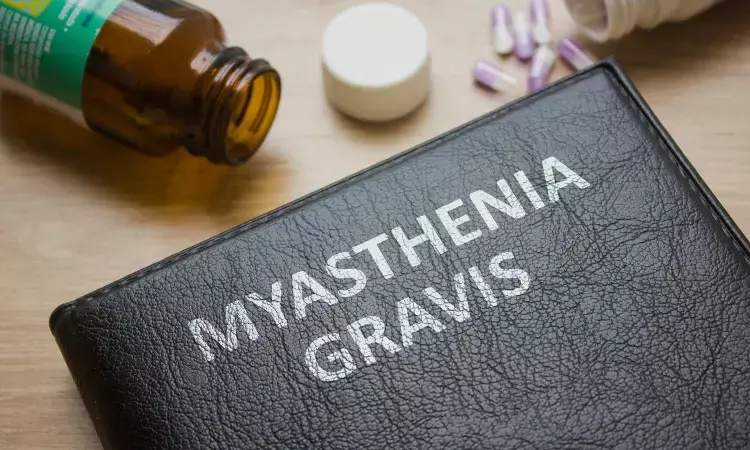- Home
- Medical news & Guidelines
- Anesthesiology
- Cardiology and CTVS
- Critical Care
- Dentistry
- Dermatology
- Diabetes and Endocrinology
- ENT
- Gastroenterology
- Medicine
- Nephrology
- Neurology
- Obstretics-Gynaecology
- Oncology
- Ophthalmology
- Orthopaedics
- Pediatrics-Neonatology
- Psychiatry
- Pulmonology
- Radiology
- Surgery
- Urology
- Laboratory Medicine
- Diet
- Nursing
- Paramedical
- Physiotherapy
- Health news
- Fact Check
- Bone Health Fact Check
- Brain Health Fact Check
- Cancer Related Fact Check
- Child Care Fact Check
- Dental and oral health fact check
- Diabetes and metabolic health fact check
- Diet and Nutrition Fact Check
- Eye and ENT Care Fact Check
- Fitness fact check
- Gut health fact check
- Heart health fact check
- Kidney health fact check
- Medical education fact check
- Men's health fact check
- Respiratory fact check
- Skin and hair care fact check
- Vaccine and Immunization fact check
- Women's health fact check
- AYUSH
- State News
- Andaman and Nicobar Islands
- Andhra Pradesh
- Arunachal Pradesh
- Assam
- Bihar
- Chandigarh
- Chattisgarh
- Dadra and Nagar Haveli
- Daman and Diu
- Delhi
- Goa
- Gujarat
- Haryana
- Himachal Pradesh
- Jammu & Kashmir
- Jharkhand
- Karnataka
- Kerala
- Ladakh
- Lakshadweep
- Madhya Pradesh
- Maharashtra
- Manipur
- Meghalaya
- Mizoram
- Nagaland
- Odisha
- Puducherry
- Punjab
- Rajasthan
- Sikkim
- Tamil Nadu
- Telangana
- Tripura
- Uttar Pradesh
- Uttrakhand
- West Bengal
- Medical Education
- Industry
Peribulbar corticosteroid administration clinically useful treatment for ocular myasthenia gravis: Study

Researchers find that long-acting agents, such as triamcinolone, are effective for treating ocular myasthenia gravis (OMG). Oral myasthenia gravis is a condition characterized by weakness in the muscles controlling eye movements and eyelids. The use of peribulbar injections with dexamethasone and triamcinolone, according to a new study, constitutes a safer and better localized alternative, suggesting their efficacy in maintaining permanent resolution of symptoms. The study was published in the Journal of Neuro-Ophthalmology by Lasry R. and colleagues.
OMG weakens the extraocular muscles around the eyes, which often leads to paralysis of eye movements and ptosis or drooping eyelids. Oral treatments with corticosteroids are well established but carry the risk of side effects to so many other body tissues that localized treatments are highly desirable. This article reports on the use of peribulbar corticosteroid injections in OMG patients, thereby providing a more localized form of treatment.
A retrospective chart review was performed in order to determine the effectiveness of peribulbar corticosteroid injections in a small group of patients who had ocular myasthenia gravis. Five patients who received that treatment could be identified for the case-analysis. The study focused on the effects of peribulbar dexamethasone or triamcinolone (40-mg Triesence), which is a longer-acting corticosteroid, which targets the area behind the eye rather than injecting the affected extraocular muscles itself. The results of resolution of symptoms, time to treatment, and recurrence of symptoms after injection were monitored by the review.
Of the total five patients inducted:
• Four patients had isolated ophthalmoparesis, that manifested as paralysis of eye muscles
• One patient had isolated ptosis.
• Four of the five patients had combinations of ptosis and ophthalmoparesis.
• Cases of ptosis and ophthalmoparesis are documented in three out of four cases, where symptoms subsided completely within a few weeks after one single injection in the peribulbar region.
• Symptoms remained improved for 5 to 6 months, and patients responded well to repeated injections in cases of symptom relapse.
In summary, peribulbar corticosteroids, mainly triamcinolone, hold considerable promise as a treatment for ocular myasthenia gravis with a possibility of holding relief for many months after less injection. This treatment carries minimal systemic adverse effects and, hence, is a more friendly option to the patient. As such, the healthcare providers should henceforth consider the peribulbar triamcinolone approach as an effective alternative for the management of OMG, especially in patients who experience frequent relapse of symptoms.
Reference:
Lasry, R., Gotkine, M., & Kruger, J. M. (2024). Peribulbar corticosteroids for ocular myasthenia gravis. Journal of Neuro-Ophthalmology: The Official Journal of the North American Neuro-Ophthalmology Society, 44(3), 419–422. https://doi.org/10.1097/wno.0000000000002148
Dr Riya Dave has completed dentistry from Gujarat University in 2022. She is a dentist and accomplished medical and scientific writer known for her commitment to bridging the gap between clinical expertise and accessible healthcare information. She has been actively involved in writing blogs related to health and wellness.
Dr Kamal Kant Kohli-MBBS, DTCD- a chest specialist with more than 30 years of practice and a flair for writing clinical articles, Dr Kamal Kant Kohli joined Medical Dialogues as a Chief Editor of Medical News. Besides writing articles, as an editor, he proofreads and verifies all the medical content published on Medical Dialogues including those coming from journals, studies,medical conferences,guidelines etc. Email: drkohli@medicaldialogues.in. Contact no. 011-43720751


